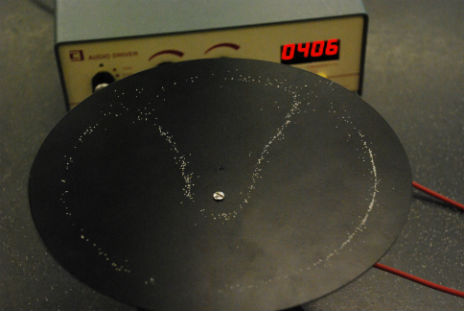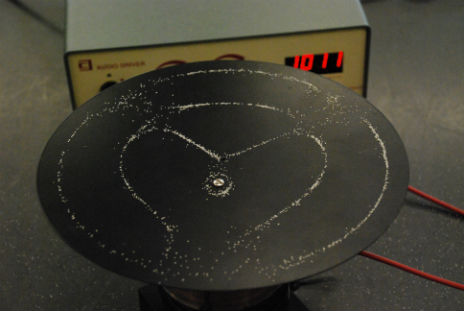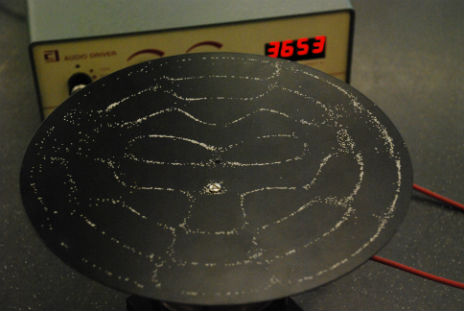
Chladni Plates
Chladni plates demonstrate 2-dimensional standing wave patterns. When a plate is vibrated at the frequency of a resonant normal mode, the nodes take on 2D shapes characteristic of the shape of the plate (i.e. constrained by boundary conditions). The nodes are stationary while the rest of the plate is vibrating. If sand is added to a plate vibrating at a resonant normal mode, the sand will settle into the nodes and clearly define the nodal pattern.
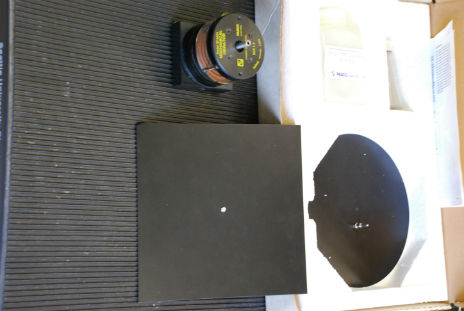
The simplest case is a circular plate. The nodal pattern of all resonant modes reflects the radial symmetry of the plate.
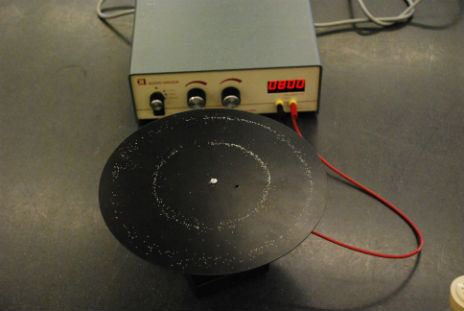
For a square plate, radial symmetries are preserved at low frequencies and radii, but boundary conditions play a larger role at higher radii and frequencies.


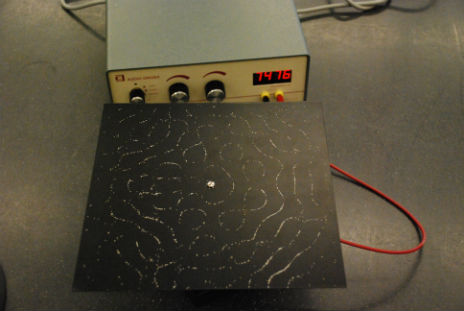
Also interesting is when the round plate is vibrated from a point off-center. Around 1000 Hz, you can make a heart. The perfect physics demonstration for Valentine's Day.
